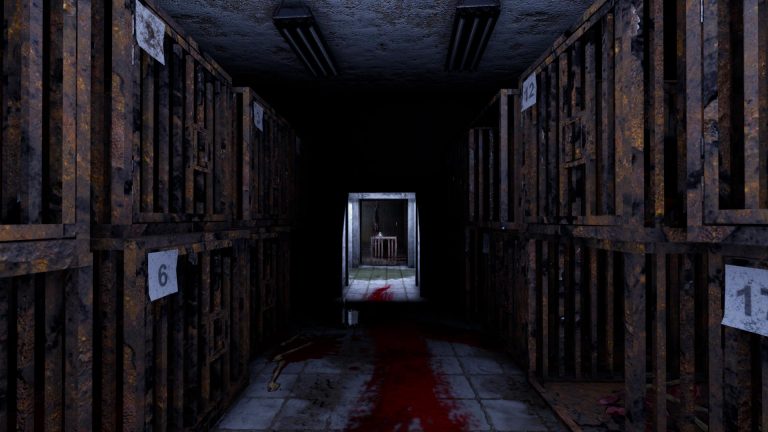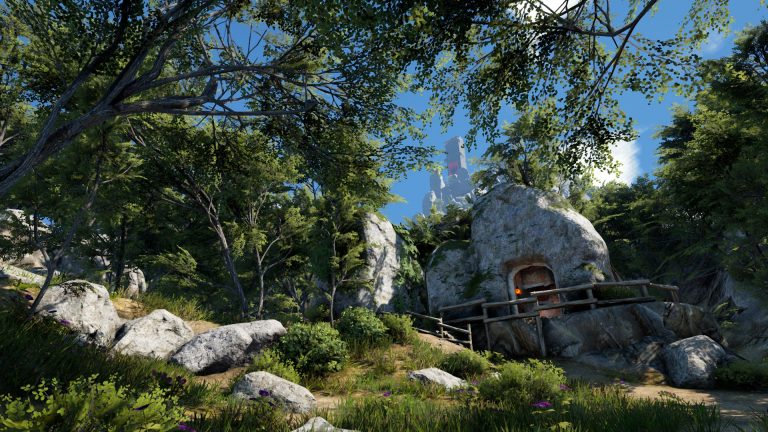Die Young
(PC/Steam 2019, PS4 2020)
Project Role: Lead Designer
Main Responsiblities: Game Design, World & Level Design, Mission Design, Narrative Design, Production.
About
The game was developed in 3 years and 9 months by a team composed of 8-12 people, using Unreal Engine 4. It was first released in early access halfway through development. As a Lead Designer, I was responsible for the game, world, level, mission, and narrative design (plus some minor tasks, such as Italian translation and forum community management).
As directions could often change during development, my biggest challenge was to reshape both the world design and narrative, without losing sight of the game’s main focus and coherence. This included making impromptu decisions as well as coming up with quick and easy solutions to obstacles in development, while coordinating the entire team.
Game Design
The game is set on a Mediterranean island inhabited by an enigmatic rural community. As Daphne — a young woman who found herself trapped in a well, not knowing who kidnapped her and why — your ultimate goal is to escape the island.
At the beginning of the project, the focus was all on survival and free exploration, relying on Daphne’s physical skills (parkour and climbing) to traverse the island, and hide and flee from enemies (humans and animals). Later on during development, the game grew in complexity, introducing combat and weapons (as well as a stronger narrative), but the core experience remained the exploration of the island in order to stay alive and unveil the mystery around Daphne’s kidnapping.
Working closely with gameplay programmers, I designed, developed, and wrote documentation for several game mechanics and systems, including:
- Parkour/Climbing
- Crafting
- Stealth
- Interactive dialogues
- In-game events
- World interactions
- Inventory
- Items & equipment
- Fast travels
- In-game collectibles trading
- Difficulty settings
World & Level Design
The game is structured as an open-world game, although on a smaller scale, given the size of the team. The player is free to explore the island and its landmarks looking for items and ways to ultimately escape Daphne’s kidnappers. This means that the locations of the game can be visited in different orders, even though some actions or items are needed to progress in the story.
Overall the game features 28 unique locations and offers 20+ hours of content.
Leading the World Design, my responsibilities included:
- Deep researching the setting (geography, history, natural environment, architecture, etc.).
- Defining a macro-design (listing main and optional locations and levels, describing mood, enemies, NPCs, gameplay mechanics and flow for each location/level).
- Gathering visual references for each location/level.
- Providing a list of assets needed for each location/level.
- Designing the map of the island (landmark positions, routes, main resources, key-item locations, fast travel points, etc.).
- Blocking out the landscape (using World Machine and Unreal Engine sculpting tools).
- Revising and iterating the macro-design in accordance with direction changes, new features and production cuts, ensuring consistency in design and narrative.
As a Senior Level Designer, my responsibilities included:
- Ownership of some of the game’s levels (designing, blocking out, testing, iterating, and polishing, working closely with the artists to bring levels from blockmesh to final state).
- Planning modular level design kits.
- Providing references, outlines, key mechanics and story beats to other level designers for some of the levels.
- Reviewing level iterations and providing feedbacks to level designers on design, direction, and balancing.
- Supervising the art passes.
Narrative Design
Working on an open-world game, my challenge as a Narrative Designer was to combine the non-linear structure of the game with a story-driven experience in a coherent way. Being a small team, we could not afford cutscenes or in-game cinematics (with the exceptions of the intro — which uses animated illustrations — and the ending sequences), so the narrative strongly relies on environmental storytelling, in-game lines, interactive dialogues, and in-game documents. The game features three different endings and several secondary/optional story routes.
My responsibilities for this role included:
- Developing the world scenario and characters after the starting story ideas for the project.
- Defining story beats both on a macro (world) and micro-level (individual locations), working with the art and level design team to convey the story through the environment.
- Writing most of the game script (in-game lines, dialogues, cutscenes).
- Designing and managing the non-linear narrative structure (handling the story progression based on players’ actions and choices).
- Designing and scripting interactive dialogue branches.
- Designing and implementing 50+ main and optional objectives, narrative-driven and focused on enriching the lore.
- Designing and writing 80+ in-game documents.
- Reshaping and iterating the story in accordance with production cuts or additions, ensuring consistency and pacing.
- Commissioning and supervising voice acting, collaborating with the sound designer.
World & Level Design
The game is structured as an open-world game, although on a smaller scale, given the size of the team. The player is free to explore the island and its landmarks looking for items and ways to ultimately escape Daphne’s kidnappers. This means that the locations of the game can be visited in different orders, even though some actions or items are needed to progress in the story.
Overall the game features 28 unique locations and offers 20+ hours of content.
Leading the World Design, my responsibilities included:
- Deep researching the setting (geography, history, natural environment, architecture, etc.).
- Defining a macro-design (listing main and optional locations and levels, describing mood, enemies, NPCs, gameplay mechanics and flow for each location/level).
- Gathering visual references for each location/level.
- Providing a list of assets needed for each location/level.
- Designing the map of the island (landmark positions, routes, main resources, key-item locations, fast travel points, etc.).
- Blocking out the landscape (using World Machine and Unreal Engine sculpting tools).
- Revising and iterating the macro-design in accordance with direction changes, new features and production cuts, ensuring consistency in design and narrative.
As a Senior Level Designer, my responsibilities included:
- Ownership of some of the game’s levels (designing, blocking out, testing, iterating, and polishing, working closely with the artists to bring levels from blockmesh to final state).
- Planning modular level design kits.
- Providing references, outlines, key mechanics and story beats to other level designers for some of the levels.
- Reviewing level iterations and providing feedbacks to level designers on design, direction, and balancing.
- Supervising the art passes.
Narrative Design
Working on an open-world game, my challenge as a Narrative Designer was to combine the non-linear structure of the game with a story-driven experience in a coherent way. Being a small team, we could not afford cutscenes or in-game cinematics (with the exceptions of the intro — which uses animated illustrations — and the ending sequences), so the narrative strongly relies on environmental storytelling, in-game lines, interactive dialogues, and in-game documents. The game features three different endings and several secondary/optional story routes.
My responsibilities for this role included:
- Developing the world scenario and characters after the starting story ideas for the project.
- Defining story beats both on a macro (world) and micro-level (individual locations), working with the art and level design team to convey the story through the environment.
- Writing most of the game script (in-game lines, dialogues, cutscenes).
- Designing and managing the non-linear narrative structure (handling the story progression based on players’ actions and choices).
- Designing and scripting interactive dialogue branches.
- Designing and implementing 50+ main and optional objectives, narrative-driven and focused on enriching the lore.
- Designing and writing 80+ in-game documents.
- Reshaping and iterating the story in accordance with production cuts or additions, ensuring consistency and pacing.
- Commissioning and supervising voice acting, collaborating with the sound designer.
Production
Coordination of all departments was crucial to keep development on track. As the game went through several changes during production, my responsibility as a producer was to keep all team members constantly up-to-date, facilitating communication across disciplines, resolving conflicts, and ensuring that goals were met without losing sight of the “bigger picture“.















